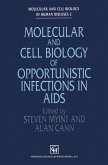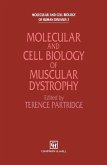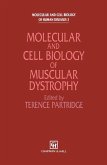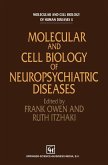Molecular and Cell Biology of Sexually Transmitted Diseases
Herausgegeben:Archard, L. C.; Wright, D. J.
Molecular and Cell Biology of Sexually Transmitted Diseases
Herausgegeben:Archard, L. C.; Wright, D. J.
- Broschiertes Buch
- Merkliste
- Auf die Merkliste
- Bewerten Bewerten
- Teilen
- Produkt teilen
- Produkterinnerung
- Produkterinnerung
Molecular and Cell Biology of Human Diseases reviews the status of research on a range of sexually transmitted diseases whose incidence has paralleled the increase in HIV infection and examines the ways in which new methods are influencing current practice and are likely to shape future management.
Andere Kunden interessierten sich auch für
![Molecular and Cell Biology of Sexually Transmitted Diseases Molecular and Cell Biology of Sexually Transmitted Diseases]() WrightMolecular and Cell Biology of Sexually Transmitted Diseases81,99 €
WrightMolecular and Cell Biology of Sexually Transmitted Diseases81,99 €![Molecular and Cell Biology of Opportunistic Infections in AIDS Molecular and Cell Biology of Opportunistic Infections in AIDS]() Molecular and Cell Biology of Opportunistic Infections in AIDS81,99 €
Molecular and Cell Biology of Opportunistic Infections in AIDS81,99 €![Molecular and Cell Biology of Muscular Dystrophy Molecular and Cell Biology of Muscular Dystrophy]() PartridgeMolecular and Cell Biology of Muscular Dystrophy161,99 €
PartridgeMolecular and Cell Biology of Muscular Dystrophy161,99 €![Molecular and Cell Biology of Muscular Dystrophy Molecular and Cell Biology of Muscular Dystrophy]() Molecular and Cell Biology of Muscular Dystrophy161,99 €
Molecular and Cell Biology of Muscular Dystrophy161,99 €![Molecular and Cell Biology of Neuropsychiatric Diseases Molecular and Cell Biology of Neuropsychiatric Diseases]() Molecular and Cell Biology of Neuropsychiatric Diseases77,99 €
Molecular and Cell Biology of Neuropsychiatric Diseases77,99 €![Echinostomes as Experimental Models for Biological Research Echinostomes as Experimental Models for Biological Research]() FriedEchinostomes as Experimental Models for Biological Research121,99 €
FriedEchinostomes as Experimental Models for Biological Research121,99 €![Echinostomes as Experimental Models for Biological Research Echinostomes as Experimental Models for Biological Research]() Echinostomes as Experimental Models for Biological Research112,99 €
Echinostomes as Experimental Models for Biological Research112,99 €-
-
-
Molecular and Cell Biology of Human Diseases reviews the status of research on a range of sexually transmitted diseases whose incidence has paralleled the increase in HIV infection and examines the ways in which new methods are influencing current practice and are likely to shape future management.
Produktdetails
- Produktdetails
- Molecular and Cell Biology of Human Diseases Series
- Verlag: Springer / Springer Netherlands
- Artikelnr. des Verlages: 978-94-010-5051-7
- Softcover reprint of the original 1st ed. 1992
- Seitenzahl: 344
- Erscheinungstermin: 5. November 2012
- Englisch
- Abmessung: 279mm x 210mm x 19mm
- Gewicht: 840g
- ISBN-13: 9789401050517
- ISBN-10: 9401050511
- Artikelnr.: 37478123
- Herstellerkennzeichnung Die Herstellerinformationen sind derzeit nicht verfügbar.
- Molecular and Cell Biology of Human Diseases Series
- Verlag: Springer / Springer Netherlands
- Artikelnr. des Verlages: 978-94-010-5051-7
- Softcover reprint of the original 1st ed. 1992
- Seitenzahl: 344
- Erscheinungstermin: 5. November 2012
- Englisch
- Abmessung: 279mm x 210mm x 19mm
- Gewicht: 840g
- ISBN-13: 9789401050517
- ISBN-10: 9401050511
- Artikelnr.: 37478123
- Herstellerkennzeichnung Die Herstellerinformationen sind derzeit nicht verfügbar.
1 Molecular mechanisms of antigenic variation in Neisseria gonotthoeae.- 1.1 Introduction.- 1.2 Gonococcal pathogenesis.- 1.3 Diagnosis and treatment of gonorrhoea.- 1.4 The surface of N. gonorrhoeae.- 1.5 Immune responses in gonorrhoea.- 1.6 Mechanisms of antigenic variation.- 1.7 Pili.- 1.8 Protein II.- 1.9 Conclusions.- References.- 2 Molecular biology of chlamydiae.- 2.1 Chlamydiae and human diseases.- 2.2 Chlamydial life cycle.- 2.3 Chlamydial chromosome.- 2.4 Chromosomal genes and products.- 2.5 Chlamydial antigens.- 2.6 Plasmid.- 2.7 DNA probes for the detection of chlamydiae.- 2.8 Chlamydial nucleic acids in tissue culture.- 2.9 Chlamydial nucleic acids in specimens.- 2.10 Amplified chlamydial nucleic acids.- 2.11 The story to date.- Acknowledgements.- References.- 3 Sexually transmitted mycoplasmas in humans.- 3.1 Classification.- 3.2 Sexually transmitted human species of mycoplasmas.- 3.3 Diseases associated with M. genitalium.- 3.4 Diseases associated with M. fermentans.- 3.5 Diseases associated with M. hominis.- 3.6 Diseases associated with U. urealyticum.- 3.7 Cell biology of mollicutes.- 3.8 Distinguishing properties of the genera and species.- 3.9 Molecular biology of mycoplasmas.- 3.10 Nucleic acid and immunological probes for detecting pathogenic mycoplasmas.- 3.11 Pathogenic, disease-related and immunogenic components of mycoplasmas.- 3.12 Pathogenic mechanisms of M. genitalium.- 3.13 Pathogenic mechanisms of M. fermentans.- 3.14 Pathogenic mechanisms of M. hominis.- 3.15 Pathogenic mechanisms of U. urealyticum.- References.- 4 Molecular biology of Treponema palIidum.- 4.1 Syphilis.- 4.2 The cell envelope of T. pallidum.- 4.3 The T. pallidum genome and molecular cloning of genes.- 4.4 Treponema pallidum lipoproteins.- 4.5 Glycosylation.- 4.6 The endoflagellum.- 4.7 The heat-modifiable oligomeric 4D antigen.- 4.8 Translational and transcriptional signals.- 4.9 Recombinant technology in the diagnosis of syphilis.- 4.10 Pathogenesis of T. pallidum.- 4.11 The surface of T. pallidum and immunity.- 4.12 The central paradox.- 4.13 Antigenic variation.- 4.14 Vaccines against syphilis.- Acknowledgements.- References.- 5 Molecular biology of Candida pathogenesis.- 5.1 Introduction.- 5.2 Growth of Candida as it relates to pathogenesis.- 5.3 The biology of dimorphism as it relates to pathogenesis.- 5.4 High frequency switching as it relates to pathogenesis.- 5.5 Genotypic variability as it might relate to pathogenesis.- 5.6 Other phenotypic traits as they relate to pathogenesis.- 5.7 The application of molecular genetic tools to questions of Candida etiology and epidemiology.- 5.8 The basic questions which remain unanswered and why.- 5.9 The range of methods used to assess genetic relatedness between Candida strains.- 5.10 Preliminary answers to epidemiological and etiological questions using DNA fingerprinting.- 5.11 Discussion.- Acknowledgement.- References.- 6 Molecular analysis of Trichomonas vaginalis surface protein repertoires.- 6.1 Introduction.- 6.2 Antigenic diversity and the immunogen repertoires.- 6.3 The double-stranded RNA virus of T. vaginalis.- 6.4 Batch versus chemostat grown trichomonads and antigenic diversity.- 6.5 Cytoadherence and the trichomonad adhesin repertoire.- 6.6 The nutrient acquisition protein repertoires.- 6.7 Conclusions.- References.- 7 Hepatitis B virus and hepatitis delta virus.- 7.1 Introduction.- 7.2 Biology of hepatitis B virus.- 7.3 Epidemiology and transmission of hepatitis B.- 7.4 Acute hepatitis B.- 7.5 Chronic hepatitis B.- 7.6 Treatment.- 7.7 Prevention.- 7.8 New hepatitis B vaccines.- 7.9 Hepatitis delta virus (HDV).- References.- 8 Molluscum contagiosum virus.- 8.1 Introduction.- 8.2 Clinical features.- 8.3 Pathology.- 8.4 Immunology.- 8.5 Transmission and epidemiology.- 8.6 Virion structure and life cycle.- 8.7 Attempts at virus propagation.- 8.8 Genome structure and organization.- 8.9 Molluscum contagiosum virus subtype nomenclature.- 8.10 Molecular epidemiology.- 8.11 Possible mechanisms of MCV-induced tumourigenesis.- 8.12 The Molluscum contagiosum virus homologue of the vaccinia virus major envelope protein: control of MCV gene expression.- References.- 9 Molecular biology of herpes simplex virus.- 9.1 Introduction.- 9.2 Taxonomy.- 9.3 The herpes virus virion.- 9.4 The viral genome.- 9.5 Productive infection.- 9.6 Latency.- 9.7 Virulence.- 9.8 Antiviral agents.- 9.9 Immunization against infection.- 9.10 Detection of HSV.- References.- 10 Anti-idiotypic therapeutic strategies in HIV infection.- 10.1 Introduction - the CD4/gp120 interaction.- 10.2 The CD4 molecule - structure and function.- 10.3 gp120 - structure and function.- 10.4 Homology of gp120 with members of the immunoglobulin supergene family (IgSF).- 10.5 Immunosuppressive effects of gp120 in vitro.- 10.6 The anti-idiotype strategy.- 10.7 Epitope mapping of CD4.- 10.8 Conclusions.- References.
1 Molecular mechanisms of antigenic variation in Neisseria gonotthoeae.- 1.1 Introduction.- 1.2 Gonococcal pathogenesis.- 1.3 Diagnosis and treatment of gonorrhoea.- 1.4 The surface of N. gonorrhoeae.- 1.5 Immune responses in gonorrhoea.- 1.6 Mechanisms of antigenic variation.- 1.7 Pili.- 1.8 Protein II.- 1.9 Conclusions.- References.- 2 Molecular biology of chlamydiae.- 2.1 Chlamydiae and human diseases.- 2.2 Chlamydial life cycle.- 2.3 Chlamydial chromosome.- 2.4 Chromosomal genes and products.- 2.5 Chlamydial antigens.- 2.6 Plasmid.- 2.7 DNA probes for the detection of chlamydiae.- 2.8 Chlamydial nucleic acids in tissue culture.- 2.9 Chlamydial nucleic acids in specimens.- 2.10 Amplified chlamydial nucleic acids.- 2.11 The story to date.- Acknowledgements.- References.- 3 Sexually transmitted mycoplasmas in humans.- 3.1 Classification.- 3.2 Sexually transmitted human species of mycoplasmas.- 3.3 Diseases associated with M. genitalium.- 3.4 Diseases associated with M. fermentans.- 3.5 Diseases associated with M. hominis.- 3.6 Diseases associated with U. urealyticum.- 3.7 Cell biology of mollicutes.- 3.8 Distinguishing properties of the genera and species.- 3.9 Molecular biology of mycoplasmas.- 3.10 Nucleic acid and immunological probes for detecting pathogenic mycoplasmas.- 3.11 Pathogenic, disease-related and immunogenic components of mycoplasmas.- 3.12 Pathogenic mechanisms of M. genitalium.- 3.13 Pathogenic mechanisms of M. fermentans.- 3.14 Pathogenic mechanisms of M. hominis.- 3.15 Pathogenic mechanisms of U. urealyticum.- References.- 4 Molecular biology of Treponema palIidum.- 4.1 Syphilis.- 4.2 The cell envelope of T. pallidum.- 4.3 The T. pallidum genome and molecular cloning of genes.- 4.4 Treponema pallidum lipoproteins.- 4.5 Glycosylation.- 4.6 The endoflagellum.- 4.7 The heat-modifiable oligomeric 4D antigen.- 4.8 Translational and transcriptional signals.- 4.9 Recombinant technology in the diagnosis of syphilis.- 4.10 Pathogenesis of T. pallidum.- 4.11 The surface of T. pallidum and immunity.- 4.12 The central paradox.- 4.13 Antigenic variation.- 4.14 Vaccines against syphilis.- Acknowledgements.- References.- 5 Molecular biology of Candida pathogenesis.- 5.1 Introduction.- 5.2 Growth of Candida as it relates to pathogenesis.- 5.3 The biology of dimorphism as it relates to pathogenesis.- 5.4 High frequency switching as it relates to pathogenesis.- 5.5 Genotypic variability as it might relate to pathogenesis.- 5.6 Other phenotypic traits as they relate to pathogenesis.- 5.7 The application of molecular genetic tools to questions of Candida etiology and epidemiology.- 5.8 The basic questions which remain unanswered and why.- 5.9 The range of methods used to assess genetic relatedness between Candida strains.- 5.10 Preliminary answers to epidemiological and etiological questions using DNA fingerprinting.- 5.11 Discussion.- Acknowledgement.- References.- 6 Molecular analysis of Trichomonas vaginalis surface protein repertoires.- 6.1 Introduction.- 6.2 Antigenic diversity and the immunogen repertoires.- 6.3 The double-stranded RNA virus of T. vaginalis.- 6.4 Batch versus chemostat grown trichomonads and antigenic diversity.- 6.5 Cytoadherence and the trichomonad adhesin repertoire.- 6.6 The nutrient acquisition protein repertoires.- 6.7 Conclusions.- References.- 7 Hepatitis B virus and hepatitis delta virus.- 7.1 Introduction.- 7.2 Biology of hepatitis B virus.- 7.3 Epidemiology and transmission of hepatitis B.- 7.4 Acute hepatitis B.- 7.5 Chronic hepatitis B.- 7.6 Treatment.- 7.7 Prevention.- 7.8 New hepatitis B vaccines.- 7.9 Hepatitis delta virus (HDV).- References.- 8 Molluscum contagiosum virus.- 8.1 Introduction.- 8.2 Clinical features.- 8.3 Pathology.- 8.4 Immunology.- 8.5 Transmission and epidemiology.- 8.6 Virion structure and life cycle.- 8.7 Attempts at virus propagation.- 8.8 Genome structure and organization.- 8.9 Molluscum contagiosum virus subtype nomenclature.- 8.10 Molecular epidemiology.- 8.11 Possible mechanisms of MCV-induced tumourigenesis.- 8.12 The Molluscum contagiosum virus homologue of the vaccinia virus major envelope protein: control of MCV gene expression.- References.- 9 Molecular biology of herpes simplex virus.- 9.1 Introduction.- 9.2 Taxonomy.- 9.3 The herpes virus virion.- 9.4 The viral genome.- 9.5 Productive infection.- 9.6 Latency.- 9.7 Virulence.- 9.8 Antiviral agents.- 9.9 Immunization against infection.- 9.10 Detection of HSV.- References.- 10 Anti-idiotypic therapeutic strategies in HIV infection.- 10.1 Introduction - the CD4/gp120 interaction.- 10.2 The CD4 molecule - structure and function.- 10.3 gp120 - structure and function.- 10.4 Homology of gp120 with members of the immunoglobulin supergene family (IgSF).- 10.5 Immunosuppressive effects of gp120 in vitro.- 10.6 The anti-idiotype strategy.- 10.7 Epitope mapping of CD4.- 10.8 Conclusions.- References.
`... a collection of excellent reviews... a valuable source of information to potential research workers as well as a useful reference for those currently involved in research into sexually transmitted diseases.'
Journal of Medical Microbiology
Journal of Medical Microbiology
`... a collection of excellent reviews... a valuable source of information to potential research workers as well as a useful reference for those currently involved in research into sexually transmitted diseases.'
Journal of Medical Microbiology
Journal of Medical Microbiology








